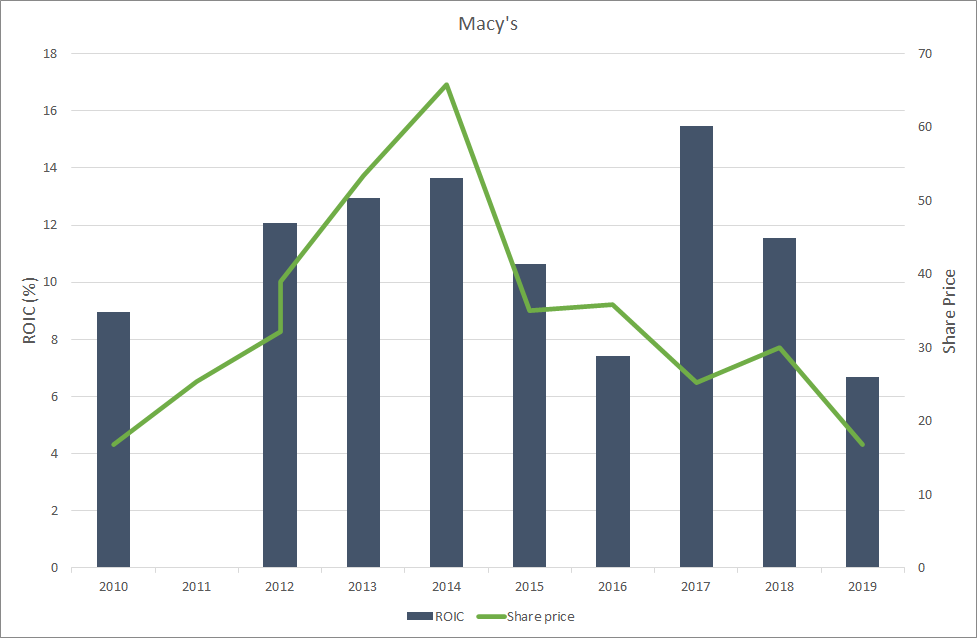
CFOs often look at return on invested capital (ROIC) to enhance the capital required to grow their businesses, particularly with the need for fast-paced transformation. But the denominator of the ROIC equation, “invested capital,” often takes a back seat; this can hamper long-term value creation and result in a less nimble transformation.
Cash is often tied up in physical assets and working capital that do not directly support long-term value creation. Many companies also do not have a properly balanced capital structure to enhance debt and equity efficiency. To augment their balance sheets and drive improved financial KPIs, CFOs can strive to:
- Reduce the amount of cash tied up in working capital
- Optimize their real estate footprint
- Purge the fixed asset ledger of “ghost assets”
- Strike the right balance between debt and equity
All four of those factors are part of the denominator of ROIC, which 68% of CFOs identified as the most helpful KPI in a recent Ernst & Young LLP capital allocation survey in partnership with Oxford Economics.
Working Capital
An EY analysis shows that 2,000 of the largest global companies have tied up more than $1 trillion in working capital. For every $1 billion in sales, the average opportunity for working capital improvement is $50 million to $100 million. Some of this capital can be freed up immediately to help fund current operations and future core investments.
CFOs can help their companies make operational changes to enhance accounts payable, accounts receivable, inventory management, and non-trade working capital through improvements in policies, processes, tools, operational dashboards, and executive governance metrics.
Commercial and supplier arrangements often do not include leading practices such as differentiated customer strategies and standardized payment processes, resulting in excess working capital needed to fund operations. Employing the right tools and analytics to better measure operational activities can help free up cash. While targeted working capital initiatives can be successful, broader programs that target improving the overall cash management culture, with CFO support, typically yield three times the expected cash improvement.
Real Estate
Real estate is often the single largest asset on the balance sheet. But in many cases, it is accumulated on a reactionary basis. The COVID-19 pandemic’s effect on organizations’ real estate needs underscores the importance of regularly reviewing real estate assets, focusing on how they align with the organization’s long-term strategy.
Steps that CFOs can take to enhance their real estate include:
- Monetizing non-strategic real estate through the disposal of excess and idle property, sale-leaseback transactions, and renegotiating leases
- Investing in real estate that is tied to long-term business objectives and utilizing sophisticated financing vehicles like synthetic leases to lower both balance sheet and income statement impacts
- Adopting flexible office footprints and consolidation or outsourcing strategies to adapt to future workforce needs quickly
Of course, the COVID-19 pandemic has made some of these steps more difficult. An August 2020 EY survey revealed that 80% of real estate investors expect market office space to decrease in the next three years, thus lowering tenants’ bargaining power when trying to exit leases early or subleasing.
Fixed Assets
Enhancing the organization’s fixed assets, or capital equipment, can generate immediate cash savings, reduce ongoing operating costs, and drive shareholder returns. EY professionals’ experience and an internal study show that most companies’ fixed asset ledger data contains 15% to 30% incorrect data, specifically unrecorded retirements, resulting in millions of potential savings.
Not properly managing fixed assets can result in rushed decision-making, unnecessary costs, and disparate reporting. Our recent experience with a national grocery retailer found nearly $1.8 billion of capitalized cost basis that was not in-service or in use. By making sure the fixed asset information included within the accounting and tax records was correct, the company realized a $4.5 million immediate tax savings. Through the same process, businesses have an opportunity to reduce insurance premiums.
Capital Structure
A well-designed capital structure facilitates a business’s goals and objectives. It can also align with the profile of the business and the industry in which it operates. For example:
- Is the business asset-light or asset-heavy?
- Is competition high or low?
- Are operations domestic or international?
The capital structures may also align with business activities, investment priorities, and other stakeholder goals. Misaligned capital structures often result in higher costs, suboptimal terms, more frequent transactions, and, ultimately, value leakage.
An unbiased, thorough review of the operations, marketplace, stakeholders, and business strategy can help to improve the design and execution of an effective capital structure. Proactive assessment of how the needs and characteristics of a business match up with available capital markets, capital instruments, and capital providers is critical. For example, covenant-lite capital structures put in place before the pandemic allowed many businesses ample operating flexibility, so they didn’t require any covenant modifications or costly amendments.
Optimize the Balance Sheet
Cost and capital constraints are the second biggest internal impediments to carrying out a company’s strategy, executives said in the recent EY Capital Confidence Barometer. Whether an organization’s strategy requires capital for organic or inorganic growth, digital transformation, or rightsizing the capital structure, balance sheet enhancement can help it get there.
By focusing on some of the prime areas where capital gets trapped, CFOs can help companies find the funds to invest in the future and move swiftly to take advantage of transformative growth opportunities.


